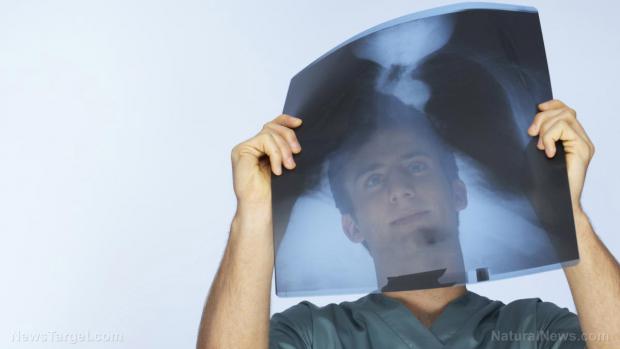
Breaking News
 2 Hours of Retro Sci-Fi Christmas Songs | Atomic-Age Christmas at a Snowy Ski Resort
2 Hours of Retro Sci-Fi Christmas Songs | Atomic-Age Christmas at a Snowy Ski Resort
 Alternative Ways to Buy Farmland
Alternative Ways to Buy Farmland
 LED lights are DEVASTATING our bodies, here's why | Redacted w Clayton Morris
LED lights are DEVASTATING our bodies, here's why | Redacted w Clayton Morris
Top Tech News
 Travel gadget promises to dry and iron your clothes – totally hands-free
Travel gadget promises to dry and iron your clothes – totally hands-free
 Perfect Aircrete, Kitchen Ingredients.
Perfect Aircrete, Kitchen Ingredients.
 Futuristic pixel-raising display lets you feel what's onscreen
Futuristic pixel-raising display lets you feel what's onscreen
 Cutting-Edge Facility Generates Pure Water and Hydrogen Fuel from Seawater for Mere Pennies
Cutting-Edge Facility Generates Pure Water and Hydrogen Fuel from Seawater for Mere Pennies
 This tiny dev board is packed with features for ambitious makers
This tiny dev board is packed with features for ambitious makers
 Scientists Discover Gel to Regrow Tooth Enamel
Scientists Discover Gel to Regrow Tooth Enamel
 Vitamin C and Dandelion Root Killing Cancer Cells -- as Former CDC Director Calls for COVID-19...
Vitamin C and Dandelion Root Killing Cancer Cells -- as Former CDC Director Calls for COVID-19...
 Galactic Brain: US firm plans space-based data centers, power grid to challenge China
Galactic Brain: US firm plans space-based data centers, power grid to challenge China
 A microbial cleanup for glyphosate just earned a patent. Here's why that matters
A microbial cleanup for glyphosate just earned a patent. Here's why that matters
 Japan Breaks Internet Speed Record with 5 Million Times Faster Data Transfer
Japan Breaks Internet Speed Record with 5 Million Times Faster Data Transfer
Human bone tissue grown from a patient's fat cells in a lab, then implanted to finish ...

(Natural News) Thanks to an extraordinary medical procedure, a man is on the road to recovering from a fractured tibia with a bone graft created from his own fat cells. This isn't a work of science fiction; it's the result of efforts made by Bonus BioGroup, an Israel-based biomedical company.
According to the TimesOfIsrael.com, a traffic accident left the patient, Danny, with a severely damaged tibia. Going through the standard medical procedure of having it fixed with metal rods ended with him having a five-centimeter gap in his shinbone. The patient was given the choice between an artificial bone fragment or a bone-healing procedure since the bone was unable to heal itself. That was when Bonus BioGroup stepped in.
Fat cells extricated from the patient were separated and cultured on a biodegradable scaffold. Within the span of two weeks, the minute, living bone particles had grown into an injectable bone graft that was transplanted into Danny's body. As per Professor Nimrod Rozen, head of the surgical procedure, the missing part of the bone would regrow in six weeks thanks to the bone particles joining together to construct a fully working bone. When that happens, the tibia will be able to function properly and allow Danny to walk once more.
"This surgery is truly science fiction, it changes the entire game in orthopedics. Today I have the ability to grow any bone in a lab," Rozen added. (Related: Israeli company successfully transplanted lab-grown bones into humans.)
Shortly after receiving the graft, Danny stated that he trusted the doctors and was confident that the procedure was a success. "I am sure they did a good job, and hope that in a few weeks I will be able to stand normally on my foot again," said Danny at the time he was interviewed.
Because the graft was made from the patient's own cells, there's a slim chance that his body would reject the graft post-injection and cause Danny to experience a severe immune reaction. As such, Rozen believes that possibilities of the surgery go beyond that of fractured bones. Cancer patients who've had amputations, older adults who struggle with osteoporosis, and even infants born with cleft palates can all benefit, as can those with dwarfism.
"In every surgery I can add ten centimeters, and it can be repeated several times. This can change the self-esteem of many people," explained Rozen.

 $100 SILVER CONFIRMED?
$100 SILVER CONFIRMED?

